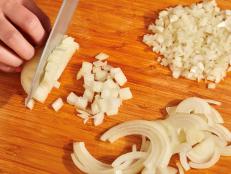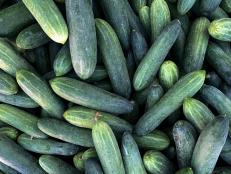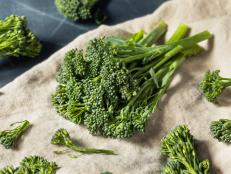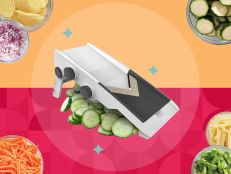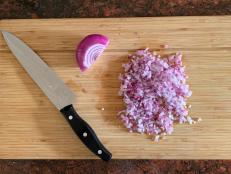How to Regrow Green Onions
All you need is a glass of water. The white bulbs will regrow green shoots in about a week.
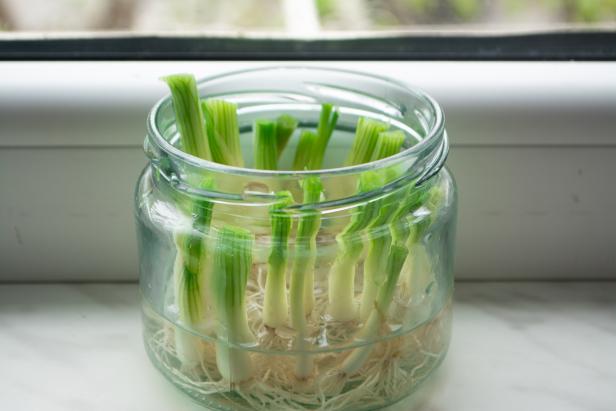
Mehriban Aliyeva/Getty Images
By Alice K. Thompson for Food Network Kitchen
Alice is a contributing writer and editor at Food Network
Regrowing green onion scraps in water is one of the easiest no-waste hacks we know. Place the white parts of the scallions in a glass of water, place it by a window and the greens will sprout (no soil necessary). Once you get your green onions (a.k.a. scallions) going, a tasty green garnish for dishes will always be a snip away. Here’s exactly how to get started (it takes just 2 minutes), plus how to try the technique on some other veggie scraps.
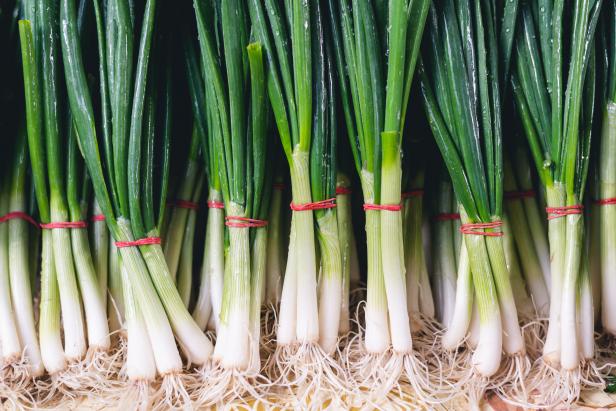
Beli_photos/Getty Images
How to Grow Green Onions
What You Need
White parts of scallions with root ends attached
Glass or jar
Water
Sunlight
Instructions
Step 1: Trim the green onions. If you haven't already, use the green tops of the scallions for a dish, so all you have remaining is the root end and white bulb and stalk.
Step 2: Place the root ends in water. Stand the white parts of the green onions, with the wispy root ends down, in a glass, jar or small bowl. You’ll have to select one that holds them upright — a fairly small glass or cup or a ramekin works well.
Step 3: Add water. Add water to cover the roots and just a bit more.
Step 4: Place them in a sunny spot. Place them by a window that gets plenty of sunlight.
Step 5: Change the water regularly. Keep the water fresh by changing it every one to two days.
Step 6: Maintain. Watch the greens shoot up within a few days. Wait a little while, and snip off the greens when you need them. Your onions will keep on giving for weeks. Eventually they’ll run out of gas, however, since water won’t provide all the nutrients the plants need for the long term. If you want to keep them going you can plant the root end in soil.
How Long Does It Take to Grow Green Onions?
You can expect to see fresh sprouts on your green onions in a couple days, and within a week you’ll be able to start harvesting them.

Malaui/Getty Images
Other Vegetables that Regrow from Scraps
You can try growing these vegetables on your kitchen windowsill as well.
Lettuce and Bok Choy
You'll get a few leaves at a time — just enough for your sandwich or for adding to a stir-fry.
-
Place the base (stem end) of a head of lettuce or bok choy with a few inches of the leaves intact in a shallow dish of water.
-
Place it by a window that gets plenty of sunlight.
-
Keep the water fresh by changing it every one to two days.
Celery and Fennel
A few stalks will regrow, making for a nice addition of flavor and crunch to salads or as a garnish to soups or stews.
-
Place the base (stem end) of a celery bunch or fennel bulb with a few inches of stalk intact in a shallow dish of water. For best results, poke toothpicks into the sides of the base to prop up it up on the rim of your vessel; you want to partially submerge the base but keep the bottom from touching the dish.
-
Place it by a window that gets plenty of sunlight.
-
Keep the water fresh by changing it every one to two days.
Related Links:
























